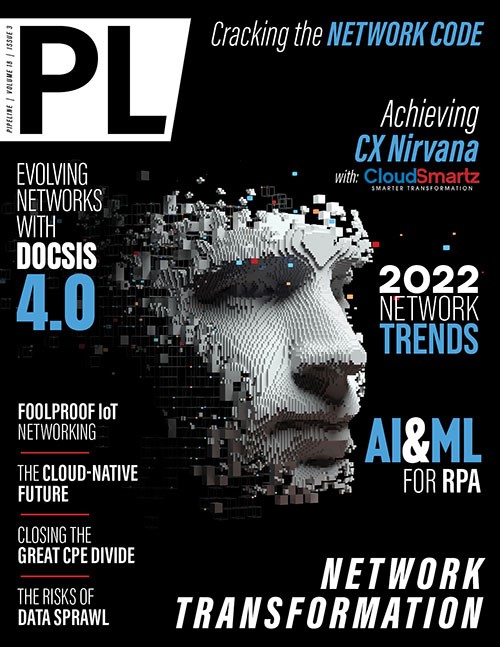Tackling the Risks of Data Sprawl
By: Kevin Johnson

We know data is king for companies worldwide, so in the age of remote work, hybrid IT environments, and the Internet of Things, how can we keep it protected and easily accessible? Most companies have a vast network of apps and devices that are constantly collecting and storing data for employees to access, analyze, and leverage for their everyday operations. This network is growing exponentially and in a more distributed fashion. According to Gartner, three-fourths of all enterprise-generated data will be generated beyond the centralized data center or cloud by 2025—up from only about 10 percent in 2018.
Between CRMs, billing platforms, and BSS/OSS systems, plus cellphones, laptops, and tablets across the workforce, networks are feeling the pressure from all angles. Enterprises are becoming increasingly good at optimizing data management costs and features via hybrid IT and multi-cloud environments, but those solutions equate to a broader network that’s more difficult to manage.
The serious implications associated with mismanagement of data are growing right along with the volume and complexity of that data. From operational headaches such as proper access to the latest data, to the most critical of concerns like security, data sprawl has challenged many organizations to better manage the data that helps their businesses stay afloat.
The challenges: efficiency and security
Collecting vast amounts of data is only truly helpful to enterprise teams if they have access to easily accessible, accurate data. The truth of the matter is the faster data is collected, the harder it is to maintain the integrity of that data and keep it organized. Where this plays a major role in production and sales is with the loss in overall efficiency. Employees are often forced to manually sift through mountains of data to find current information. This inefficiency in accessing data, to an extent, defeats the purpose of the automated systems pulling that data in.
The other and potentially more concerning consideration is the security issues that are inherent to poorly managed data sprawl. Never have enterprises and service providers had to spend so many of their resources on maintaining data security, and even with the boost in data protection-related spend, the numbers show the struggle.
A recent survey of 400 IT executives found that the marriage of rampant data growth and a lack of visibility is worsening security risks. Every one of the surveyed executives reported data storage in “informal repositories like email, collaboration portals, and local devices,” which they admit are among the hardest sources to protect.
Ransomware has emerged as the top security concern for companies with more than 1,000 employees, and rightfully so. We’ve witnessed a meteoric rise in breaches throughout the COVID-19 pandemic, with a few of history’s largest, most costly, and most brutal attacks making headlines—from Kaseya to Scripps to Colonial Pipeline to Ferrara Candy (right before Halloween). And unfortunately, almost all ransomware attacks involve a data theft component these days. The fact that we are seeing successful attacks on organizations that are highly regulated, security-focused, and considered critical infrastructure illustrates that every organization is vulnerable. Certainly, data sprawl is contributing to an already significant risk of breach.
The solutions: data tiering and microsegmentation
So, what can companies do to mitigate these challenges, knowing that data sprawl will continue? Many businesses are treating all data the same when that’s far from the truth. Take, for example, a medical facility. HIPAA-protection patient records shouldn’t be stored the same as years-old call notes or employee schedules. The easiest answer is to apply the gold standard across all data, but it’s also the most expensive response.
Data tiering is the cost-sensitive solution that works for both data accessibility and security. You can view automated data tiering the way you might look at your own everyday items like clothing. The items that you wear all the time are likely sitting on



















